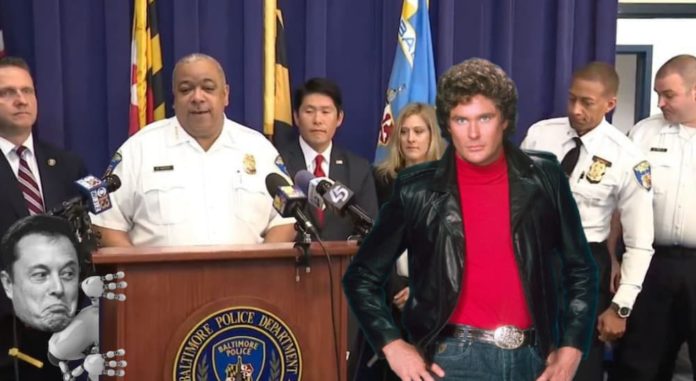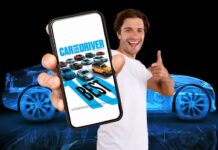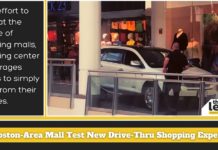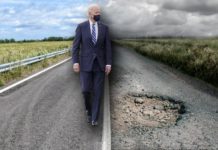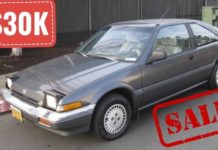At a recent press conference, police officers and union leadership from [location redacted] voiced a number of concerns they have about the future of the auto industry. In particular, their worries revolved around the development of automated vehicles that will be able to drive themselves. I, myself, have some concerns about the safety of these vehicles and how well they’ll actually be able to perform in the real world. So far, the biggest hurdles for companies developing these vehicles have been parking lots, where traffic is wildly unpredictable.
While attending this press conference, I assumed that law enforcement shared my concerns and had similar worries about the safety of automated vehicles. After all, computers are quite impressive these days, but still fall short of the kind of computational and decision-making power that the human brain has. As deputy [name withheld] approached the podium and began to speak, however, I realized their concerns rested with other aspects of this technology. They’re worried about something I had never even considered.
What follows is my account of that conference…
More than 20 Million Motorists in the US are Stopped by Police Every Year
“Ladies and gentlemen, thank you for joining us today,” deputy [name withheld] began, “I know you’re all quite busy, so I’ll keep my comments relatively brief. For many years now, the law enforcement community has done its best to uphold law and order, to maintain the peace, and to provide a solid bedrock of stability upon which our nation is built. This foundation is now being threatened, however, and I am here today to voice the concerns of the law enforcement professionals throughout this great nation with all of you.
“To keep things brief, let me speak plainly: we’re worried about the impact that automated vehicles will have on our ability to uphold law and order. As many of you may know, the most common interaction that we have with suspects is through routine traffic stops. By seeing a vehicle and seeing the individual driving it, we are able to ascertain the potential threat they represent and take appropriate action to stop them.
“Such traffic stops are the keystone of our ability to do our jobs. With a routine traffic stop, we can identify a suspect or other individual, stop them, identify and detain them, and take further action if needed. This makes it easy for us to spot a suspect at a distance, perhaps only getting a quick glimpse of their color… their hair color, I mean, and their… um, their facial features. And use this in—we can use this to help identify potential threats.”
Black Drivers are 20% More Likely to be Stopped by Police than White Drivers
It was at this time that deputy [name withheld] paused a moment to discuss his comments with a union representative by his side. There were several of them, along with a team of lawyers and a few nameless politicians, all joined to show support and solidarity during these difficult times. After several minutes of conferring, the deputy continued his address.
“Automated vehicles will obey all traffic laws by default. Their programming will not allow them to drive too fast, pause too briefly at a stop sign, or take a turn a little quickly for our liking. This means we won’t have an excuse to pull the suspect over and detain them for questioning, to have them get out of the vehicle for a routine search, or to take appropriate action when a threat is detected, and we need to defend ourselves against unarmed assailants.
“In particular, we in the law enforcement community have grave concerns about the ability for automated cars to conceal the ra—um the identity, and um, background of a suspect driving a vehicle. If we cannot see a driver, we cannot determine if a suspect’s background justifies stopping them to identify them and detain them for further questioning. This will severely impact our ability to fight back against criminal combatants that fill the streets and housing projects of this fine city.”
At this point in the conference, several journalists attempted to ask questions, seeking clarification on what the deputy meant with some of his vague and not particularly descriptive phrases. Although no explanation was offered, I got the distinct impression that the police officers in attendance had something fairly specific in mind that they were dancing around. What that could be, I simply can’t imagine.
Drivers of Color are More Likely to be Searched after a Stop than White Drivers
“We’re worried about our ability to do our jobs,” deputy [name withheld] continued, “if we cannot see the identity of suspects driving in vehicles. In order to combat this, and ensure a safer, more peaceful society for everyone, we’re looking at a number of possible solutions to this potential problem. We considered banning the use of window tinting, but a lot of us and our friends like having tinted windows for increased privacy while we’re doing completely legal things, so that was not a great option.
“There was a suggestion at one point to utilize vehicle color and establish laws with new requirements on who could drive certain colors of vehicles. While I won’t go into all the specifics today, I can tell you that we also found that to be an unappealing solution. Although most of us agreed that we were okay with not driving brown and yellow cars around anymore, there were numerous complaints about none of our friends being able to own and drive a black car or SUV. So, again, that was not a good solution.
“Instead, we are putting forward a new plan: electronic identification regarding the driver’s background on every vehicle. We’re still workshopping exactly how this label will appear, but it should be fairly simple to have an indicator on the license plate of a vehicle to identify the background and criminal likelihood of the driver or vehicle owner. This would have very little interference with most drivers and law-abiding vehicle owners, and not impact your ability to own and operate the car you want.
At Night, When Drivers are Hard to See, the Difference Between White and Black Drivers Being Stopped by Police is Smaller
“When you register your vehicle, the motor vehicle employee will simply indicate your particular background, which will flag your vehicle with the appropriate label. A satellite network will then track drivers of particular high-risk backgrounds and provide real-time information to law enforcement officers about where they are when driving. This will allow a police officer to keep track of all potentially dangerous suspects that are currently on the road at any given time.
“With this impressive new technology, we’ll no longer accidentally stop an individual with a pure background and clean character. Only those individuals that have a predisposition to crime and aggressive behavior, based on their background, will be flagged for law enforcement. This allows us to react to each situation properly, and to apply the necessary amount of force to a situation before it is necessary.
“Thank you for your time, we look forward to having this system implemented soon – though to protect our interests, we will not inform the public about when, specifically, it becomes active. There will be no questions.”
With that, deputy [name withheld] walked away from the podium and was followed by the assorted politicians and union representatives that had stood beside him. I heard a distant sound, as if a far-off mother was weeping, but I managed to ignore it and went back to playing a game on my phone.
Editor’s Note: A study of more than 600 firearm homicides committed by police from 2014-2015 found that while white people accounted for 62% of the population in the studied areas, they made up 54% of the deaths by police officers. On the other hand, black people accounted for only 12% of the population in the areas studied, yet made up 25% of deaths in those police shootings. Thank you.


